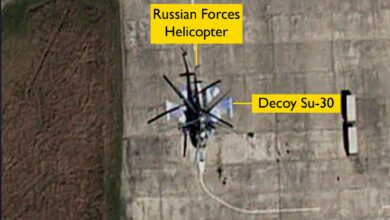The Ukrainian military will receive a new type of counter-drone air defense system from Norway amid Russia’s increasing use of powerful loitering munitions.
The system, known as the CORTEX Typhon, will reportedly provide crucial protection against enemy combat unmanned aerial vehicles (UAVs), such as Moscow’s Shahed-136 attack drones.
Transfer of the anti-drone system will be made possible through the International Fund for Ukraine, a funding mechanism from international partners to procure defense items for the war-torn nation.
Norway’s Kongsberg said it received 56 million euros ($71 million) to deliver the new capability to the Ukrainian military.
“This contract will provide a significant capability boost for the Armed Forces of Ukraine and will support their ability to protect their people and defend their country against aerial threats,” company president Eirik Lie explained.
Kongsberg did not disclose the precise number of CORTEX units under order or the delivery date.
Three Main Elements
The CORTEX Typhon system utilizes field-proven software and hardware produced in cooperation with Teledyne FLIR.
It reportedly has advanced solutions to physically harm or otherwise disable an aerial threat.
The anti-drone system will have three main elements: a surveillance and target acquisition radar, the PROTECTOR RS6 Remote Weapon Station, and the CORTEX Integrated Combat Solution (ICS).
The Remote Weapon Station will be configured for Ukraine to fire the M230 LF 30-millimeter low recoil cannon instead of a 40-millimeter automatic grenade launcher.
Meanwhile, the CORTEX ICS will control the whole air defense system.
“This (system) will help save lives of Ukrainians and is important in countering Russia’s severe aggression,” Norwegian defense minister Bjørn Arild Gram said, as quoted by Kyiv Post.
Increasing Use of Attack Drones
The announcement comes as Russia increases its reliance on loitering munitions to destroy critical Ukrainian infrastructure.
In May, a “massive” Russian drone attack on the Ukrainian capital killed one civilian.
Several enemy UAVs also struck the strategic Ukrainian port of Odesa, causing damage.
The Ukrainian military has admitted that it lags far behind Moscow in deploying electronic-jamming technologies to intercept incoming drone attacks.












